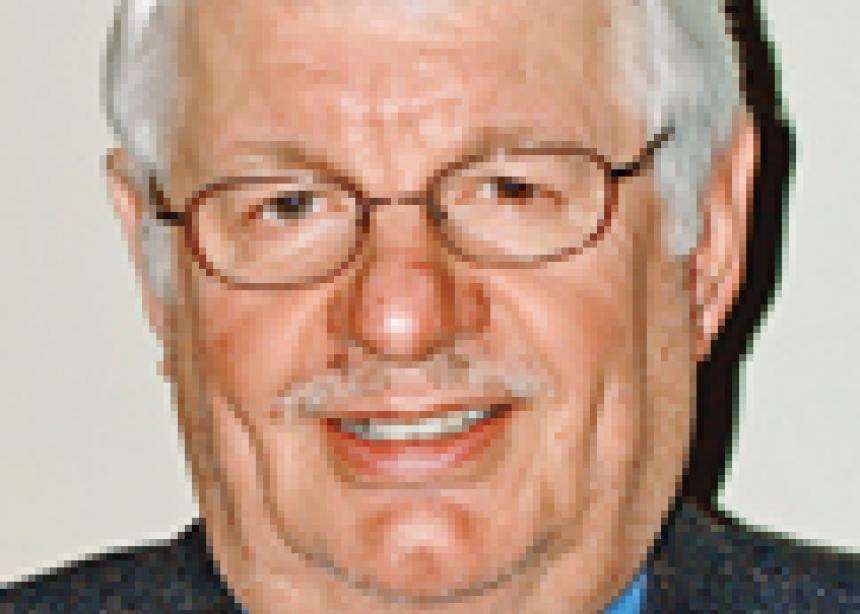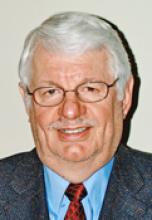At age 65, he was too young to die. For Stan Benner, my brother whom we just remembered this past weekend, it was especially incongruous. Living life at full throttle, he had big plans for the last leg of his journey. A deadly disease—non-Hodgkin’s lymphoma, a blood cancer that invades the lymph system—weakened his otherwise healthy body in less than a year, interrupting dreams for a stimulating retirement he and his spouse Marg were anticipating.
The devastating turn of events caught us all off-guard. For we all as family, friends and fellow church members knew him as having a zest for living, an enthusiasm for everything artful, soulful and enduring. Life for him was like doing a painting, engaging all the senses of sight (sunsets, mountain views, gurgling streams, wild flowers), sounds (the music of the spheres), smells of the seasons (the fragrance of flowers and ripening fruit), and taste (the culinary delights of favourite dishes).
What was it that gave his portrait such rich texture, such subtle hues of light and shadows, such an invitational touch that drew people to him for inspiration, for hope and light on their own journeys?
Through the mist of my and others’ grief, I saw a light shining, a kind of revelation that only comes through, I think, when a life lived to the fullest come out in bold relief.
While his, of course, was his own unique personality formed by family genes, I can’t help but think that his development was primarily shaped in the community of a particular faith: Anabaptist Mennonite. While Stan and I both spent considerable time critiquing the theological fine points and living out of that brand, it was the primal force of that enduring ethos that gave his soul succour, that probably motivated his career choice (professional family counselling), that gave him guiding lights in his many relationships.
What took my thoughts in this direction was a comment by an aging uncle at a visitation service, who, comparing how we conduct ourselves to other faith traditions, remarked that “Mennonites know how to do death.” Taken aback, I had never thought of just how we deal with death, and certainly didn’t think we, as Mennonites, did it any better; in fact, I was a little repulsed that the declaration was just a little alarmingly haughty.
Since it stuck in my consciousness, I pursued the thought further. Certainly, Stan was not pietistic, trying, in fact, to develop a suitable language for his faith tenets that could give him handles in dealing with families in conflict. And while he didn’t often find that language in church—but in innovative counselling approaches and, more recently, in Celtic spirituality—his grounding, I will speculate, came from his Anabaptist roots.
Always a part of a congregation, he knew this was his relational base, his spiritual home, the persons who will stick by you through thick and thin, who are not only your sojourners in life, but will surround you in death. It’s called “priesthood protocol,” for lack of a better term. We are members one of another. How often have we heard that!
This is not written down; it’s not part of our confession. It’s a tacit agreement. How does it express itself? In the bringing in of meals for the family; in providing lodging and hospitality for those coming from a distance; in sharing stories that form a narrative for celebrating a life; in singing through our grief; in taking comfort in dearly held Scripture passages; in the pastor, though giving voice to our lament, assuring us that God is not absent from our suffering.
We are a people of hope. And what is the basis of that hope? It’s our belief that death is not the end of the journey, but a continuation of life—taking on a different form (this mortal puts on immortality)—that we can endure the pain of separation and loss.
We do not engage in the visions of “pearly gates and streets of gold,” but rather that a person’s spirit, though absent from the body, lives on as inspiration, example and instruction for those left behind, and that whatever form its habitat takes in the hereafter, it is present with God and the saints who have gone before—a continuation of “community.”



Add new comment
Canadian Mennonite invites comments and encourages constructive discussion about our content. Actual full names (first and last) are required. Comments are moderated and may be edited. They will not appear online until approved and will be posted during business hours. Some comments may be reproduced in print.